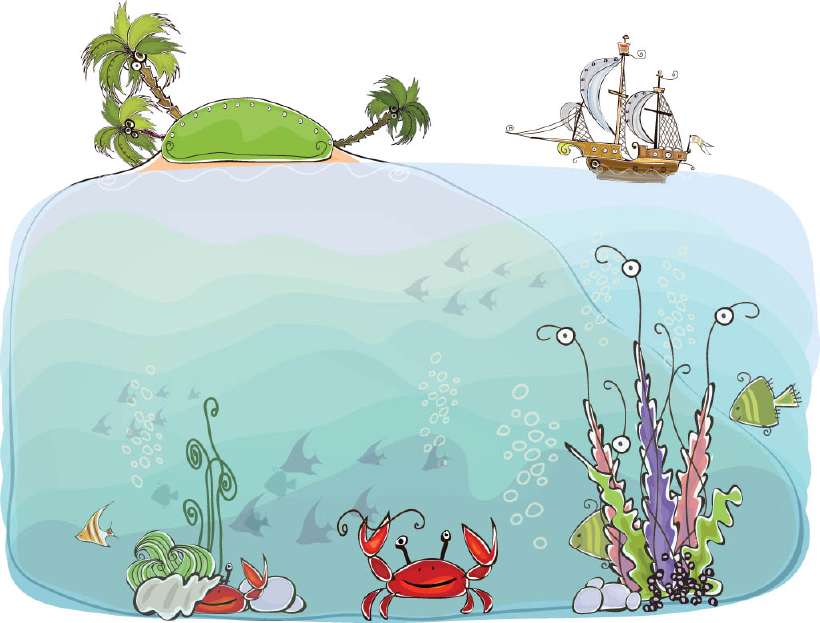The Secrets of the Ocean Floor
Home / Science for Kids / Planet Earth for Kids / The Secrets of the Ocean Floor
It is one question that is not a quizmasters’ favourite: which is the tallest mountain on earth? The answer is bound to come fast and snappy – Mt Everest, at a height of 29,000 feet.
But that is only on land. For, if you were to measure from the bottom of the ocean, the tallest mountain in the world will probably be Mauna Kea in Hawaii. It rises more than 15,748 feet under the sea and another 13,779 feet above it. The total comes to more than 29, 527 feet.
There are such deep trenches in the deep sea that a mountain like Everest could disappear into them without a trace! (A trench is a long, narrow, steep depression in the ocean floor).

But, as US marine scientist Cindy Lee Dover points out in her eloquent book, ‘Deep Ocean Journeys: Discovering New Life at the Bottom of the Sea’ (1996), the seafloor is the “largest and least known wilderness on our planet. We know more about the surface of Mars and Venus and the back side of the moon than we know about the seafloor.”
And that is a real tragedy, as she points out. For, there is reason to believe that every process that is taking place on the ocean floor tells us about the processes that were responsible for the shaping of the earth’s surface as we know. “If we are to understand the geological forces that shape our planet, we must understand the geological processes expressed by features on the seafloor, says Dover.
The scientist has travelled to the depths of the ocean to explore the various kinds of complex creatures living in the deep waters near volcanic vents that could function as models for sites where life might have originated on earth.
The statistics she gives are startling: that the lava produced by underwater volcanoes in a year is enough to cover an area four times the size of Alaska with one metre of lava! More than one million volcanoes occur in the Pacific Ocean Basin alone, but less than one per cent of these volcanoes have been studied and monitored. That means, less than one per cent of the planet’s seafloor has been mapped, explains Dover.
That is why, most of the fauna belonging to the deepwaters are not familiar to even scientists. Many of them perhaps do not even have names. But the richness of these deep-sea ecosystems can rival that of the tropical rainforests.
![The Secrets of the Ocean Floor [Illustration by Shinod AP]](/media/earth-126_1_hu818f79ad9dd918819f846f27cdd9e4e5_13196_820x0_resize_q60_box.gif)
Some of the names given by scientists to freshly discovered animals are really funny, says Dover. Among them are the spaghetti worms, named as such because of their resemblance to the eatable. Found in a tangle, it is often difficult to make out where one ends and another begins! Just like spaghetti, one might add.
At the time of the book’s publication, Dover was working as a visiting investigator at the Woods Hole Oceanographic Institution in Massachusetts, a pioneer in deep-sea research since the 60s.
512 words |
5 minutes
Readability:
Grade 8 (13-14 year old children)
Based on Flesch–Kincaid readability scores
Filed under: planet earth
Tags: #oceans, #scientists, #volcanoes, #planets, #mountains
You may also be interested in these:
Himalayas Have a Deep Impact on the Climate of the World
My Dream (A Vision Of Peace)
Rocky Planet of Fire and Ice
When will the Oceans of the Earth Overflow?
The Dark Kingdom of Uranus